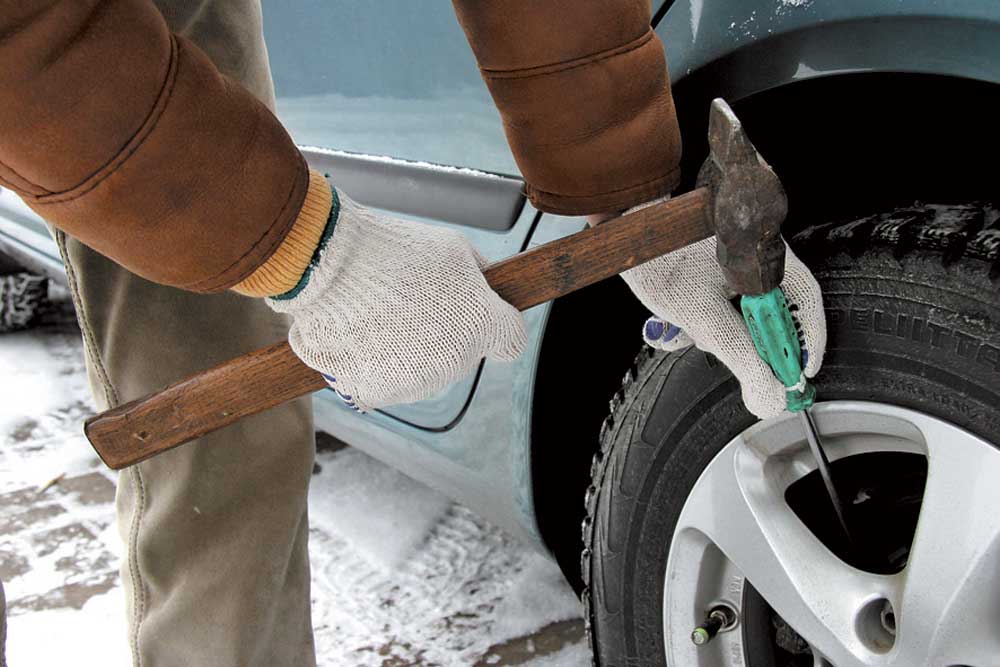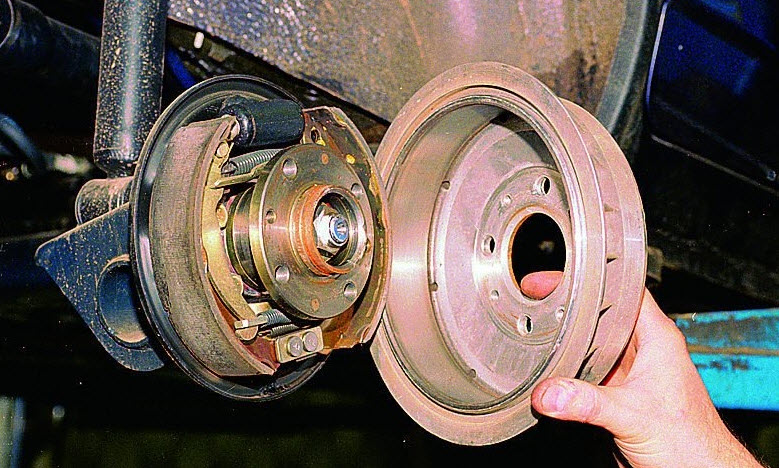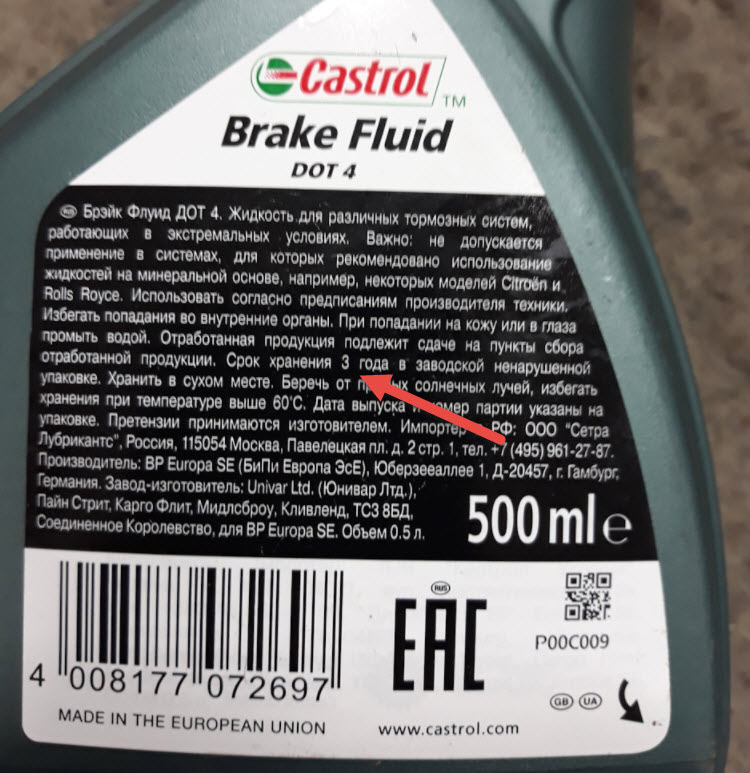
What to do if the brake pads are frozen
Content
Dry brakes do not freeze; to block parts of the system, it is necessary to have water or snow with ice, which, having received a charge of heat from heated mechanisms, will melt and drain where they should not. The problem will show up on a frosty morning when the car cannot be moved. It will be fixed by any number of frozen wheels, from one to all four.

Signs of freezing
The basis of all the signs that a driver can notice from his seat is increased resistance to movement. It can affect with the attempt of the car to change the direction given by the steering wheel or without it:
- a rear-wheel drive car is almost impossible to move, the clutch burns, the engine stalls;
- the same car can be made to go, but the impression exactly corresponds to starting off with the hand brake applied, although its lever is released;
- when moving the handbrake lever, the usual resistance on its part has been changed;
- the front-wheel drive car starts off, but only at increased speeds, smooth operation of the clutch, and a rattle or screech is heard from behind, when viewed from the side, it is noticeable that the rear wheels do not rotate, but go skidding;
- even a front-wheel drive car or SUV sometimes fails to move with all diligence.

If this happens in winter when the air temperature is below zero or it was such at night, then with a high probability it can be argued that the brakes are really frozen and holding the car.
It is necessary to stop all attempts and take action.
What to do if you can't move
The general principle of dealing with the phenomenon, when it has already happened, is the local heating of freezing places. Specific methods depend on what exactly is frozen.

Freezing pads to disc brakes
Ice can form in the gaps between the pads of the disc service brakes of any wheel and the disc itself.
The technique of this knot is such that the distance from the pads to the cast-iron or steel surface is minimal. In order for the brakes to work quickly and without excessive free play, the gap is a tenth of a millimeter or a little more.
Very little water is required to tightly solder the pads to the disc. It is enough to drive through a puddle or melt the snow that has fallen on the calipers. The contact area is large, while there is no protection, the pads and discs are open to all weather and road manifestations.
It is quite difficult to heat these knots. That's why they are designed to intensively release heat. In addition, the choice of a particular method is usually limited.

You can use the fastest and most affordable of the entire set of tools:
- a powerful stream of hot air, besides safe, creates an industrial hair dryer. But for its operation, an AC mains supply is required;
- nothing bad will happen if you use hot water, the brakes are not a body, they will quickly warm up in motion and excess moisture will evaporate;
- you can try to destroy a small amount of ice by jerking the car through the transmission, the efforts should be small, but frequent, short jerks, the ice should not be broken, but forced to crack, the main thing is to stop these attempts in time if they do not help, regretting the transmission;
- warm air can be obtained from the exhaust pipe of the car itself, if you stock up in advance with a thick flexible hose of a suitable length;
- at low negative temperatures, you can use defrosters and washer for locks and windows, but this is not the best way, you can get the effect of lubricating the brakes with the substances that make up them, use only if the exact composition of the product is known;
- you can also break the ice mechanically, with short sharp blows through the spacer on the blocks, access is usually available.

In more severe cases, you will have to remove the wheel to gain convenient access to the affected area by any of the methods.
Pads frozen to the drum
Much more water can accumulate in drum brakes, and there is no direct access to the linings. However, all the described methods for disc brakes will work, but the procedure will most likely take longer.
With the wheel removed and the bolts of the drum fastening turned away, the blows from the inside along the edge will work quite effectively. But be careful, usually the drum is a product made of a brittle light alloy with a cast-iron ring filled in, the edges break off easily. You will need a wide wooden spacer.

It is much safer to use a hair dryer or hot water. In the latter case, do not forget to dry the brakes by driving with the pedal pressed. It is better not to tighten the handle.
It is perfectly safe to use a propane torch with the wheel removed. There is nothing to burn there, and the result will be fast.
If you grabbed the handbrake
An unpleasant place for freezing is the handbrake cables. It is difficult to expel water from there, since there is no ventilation, and when driving, they do not warm up. The best solution would be to go to replace the cables after warming up with a hairdryer.

If water has accumulated there, then this means the presence of corrosion, and next time it is she who will jam the handbrake, and not ice, then no warm-ups will help, only disassembling the nodes, which few people want to do in the morning instead of a trip.
We must not forget that it is generally unsafe to refuse to use the handbrake.
How Not to Do
No need to try to use force, both your own and the engine. Its power is enough to cause multiple damage to the car with consequences in the form of expensive repairs. At the same time, the ice in the brakes is likely to retain its solidity. We must act gradually and patiently.
Do not use strong saline solutions. They remove ice, but contribute to rapid corrosion. The urine that is sometimes advised is for humor.
How to avoid freezing brakes in the future
Before parking the machine, the brakes must be dry, but not so hot that condensation forms in them. A series of small braking is enough, while driving into puddles and liquid mud should be avoided.
The handbrake cables must be kept lubricated by carrying out this small preventive maintenance before the winter season. And if rust is found, they should be ruthlessly replaced.
A handbrake is necessary, no parking mode, which is in automatic transmissions, will replace it. Unless sometimes you should not use it in changeable weather, leaving the car for a long time. It is better to use wheel chocks, which you must have in the car.
